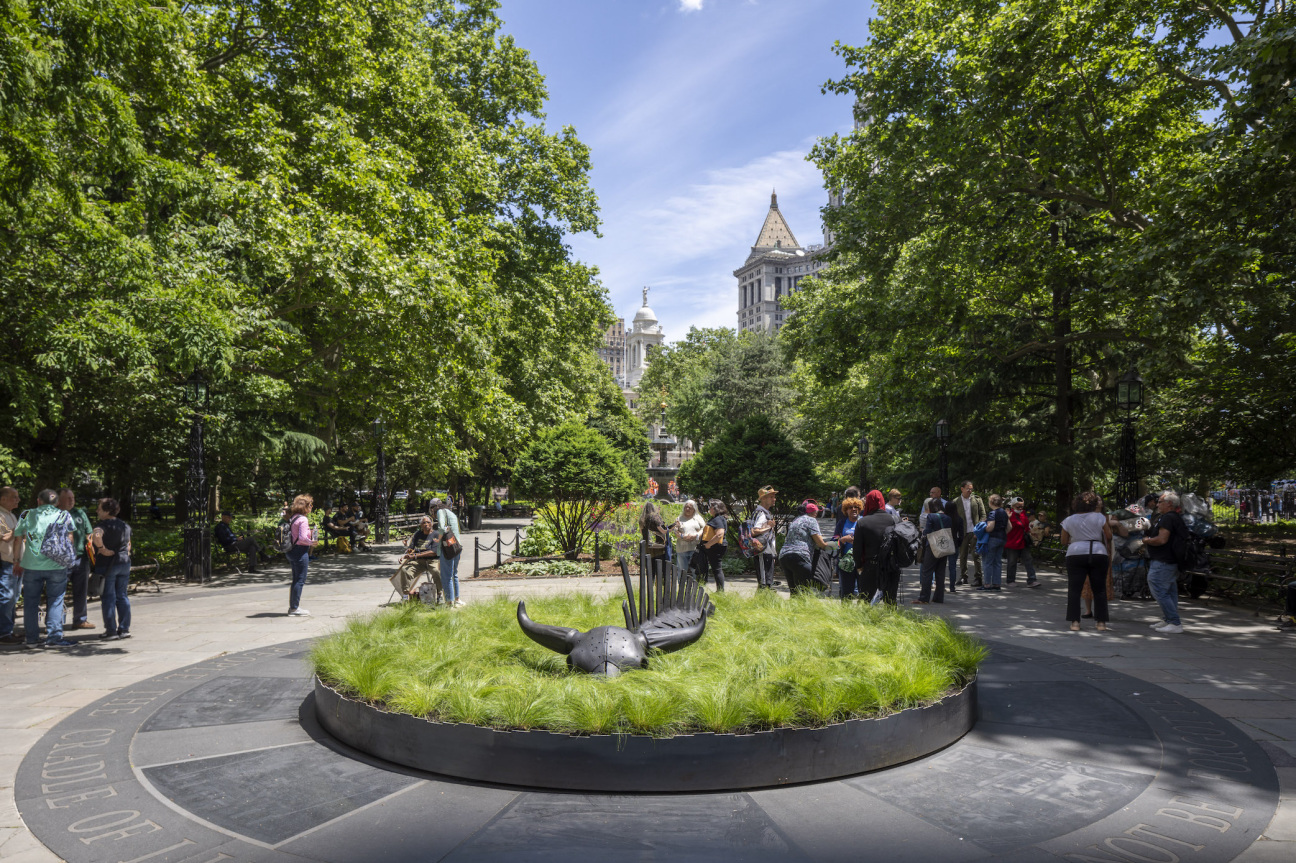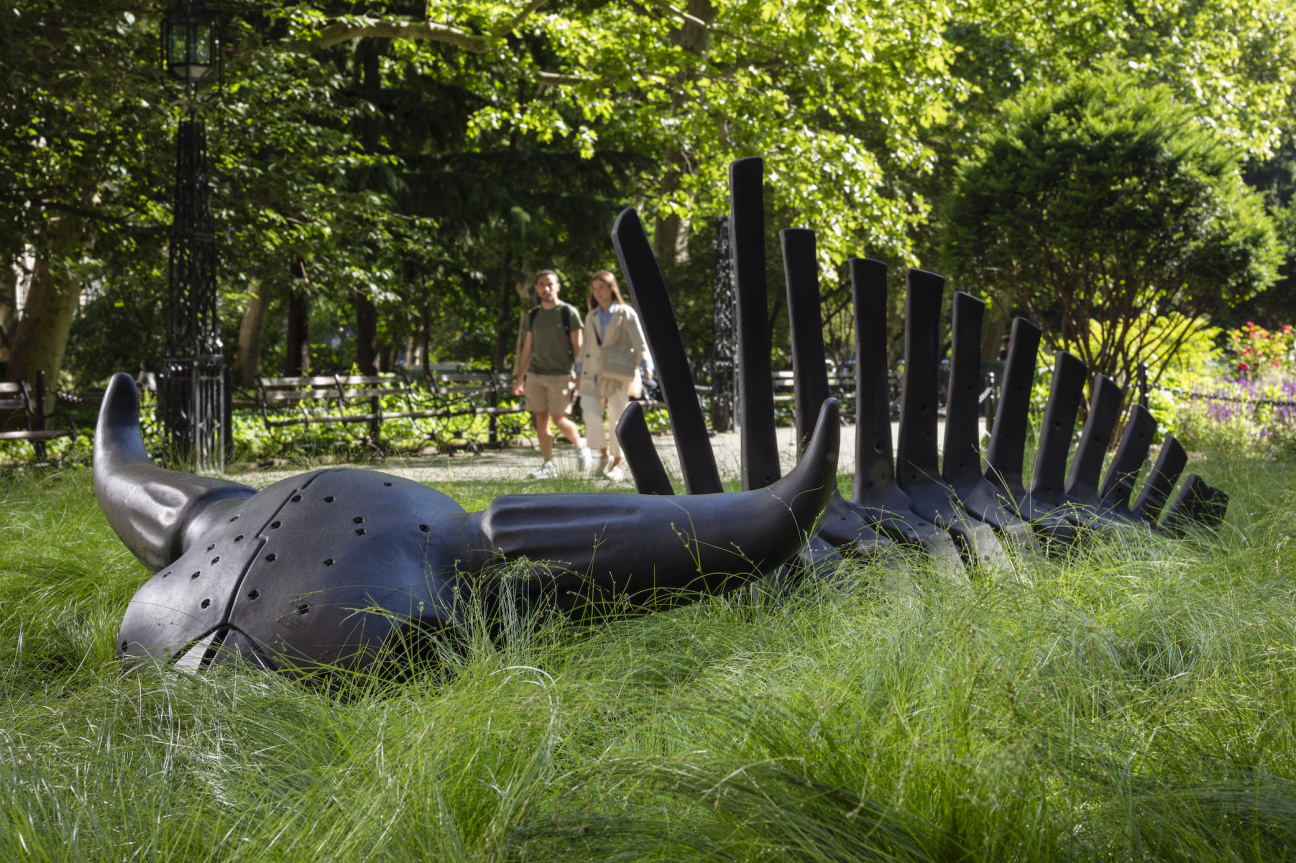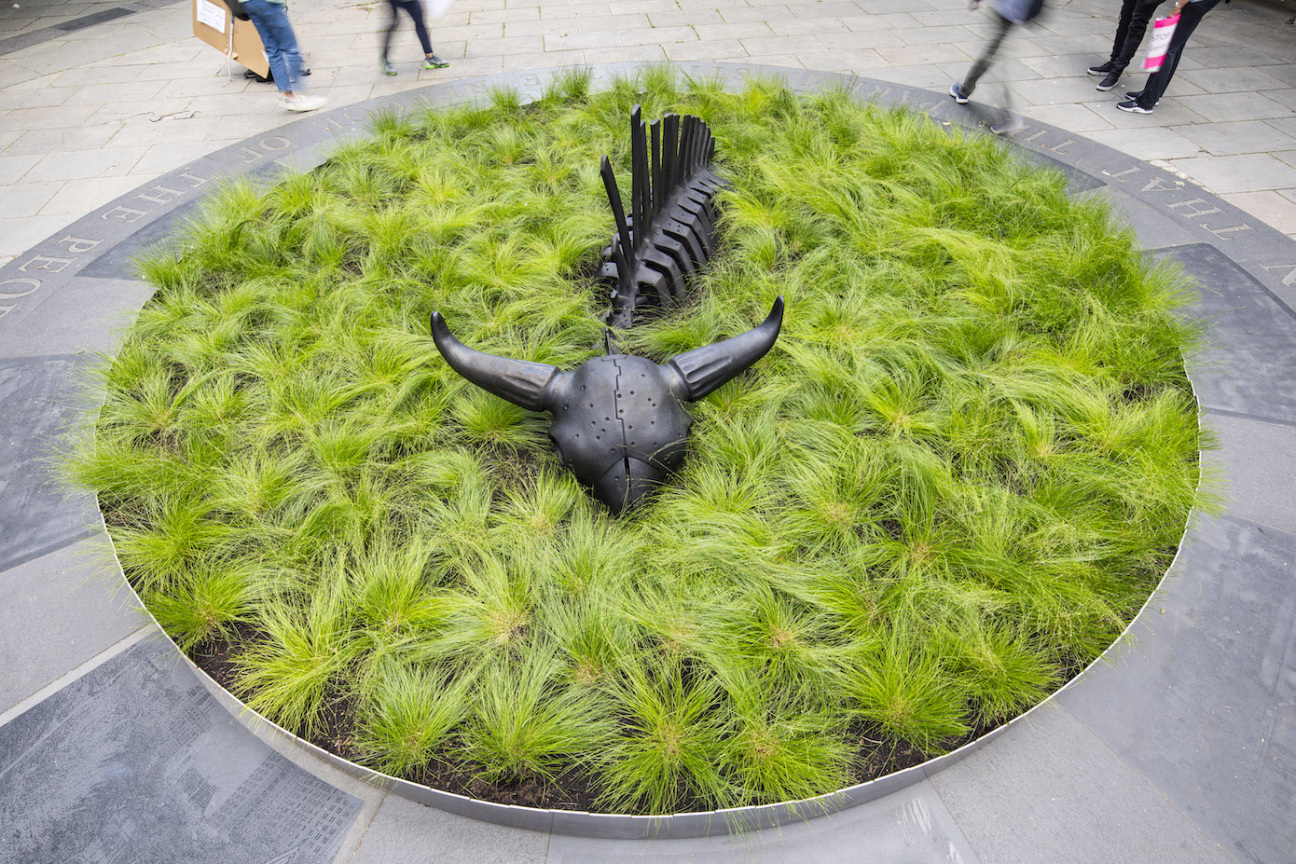
At the dawn of the 1800s, as many as 60 million bison roamed North America. By the end of the century, there were fewer than 1,000. The more settlers went west, the more these creatures were slaughtered. So extreme was the carnage that transcontinental train passengers occasionally reported strange scenes on the summer plains passing by.
“It looked like it was winter in July because of all the bones,” says artist Cannupa Hanska Luger, an enrolled member of the Three Affiliated Tribes of Fort Berthold from the Mandan, Hidatsa, Arikara, and Lakota cultures.

For the next six months, bones like these can be found in a very different location: Manhattan’s City Hall Park, where Luger has teamed up with the Public Art Fund to plant a 10-foot-long steel bison skeleton in a raised bed of native plants. The sculpture’s name, Attrition, doubles as a description: It is big and hollow, ash-black and weather-worn—a gaunt anti-monument to the brawny Bull a few blocks south.
“You could make a bronze of a bison that is fully fleshed, wooly, standing on the landscape, but that doesn't tell the story of our relationship to it,” Luger says from a studio at the Crow’s Shadow Institute of the Arts in northwest Oregon, where he’s about to wrap a residency. “When we look at bison, we think of the land,” he continues, “but its absence says a lot more than its presence.”

This is a busy, career-altering year for the 45-year-old, whose list of 2024 accomplishments includes a solo show at the Nevada Museum of Art, participation in the Whitney Biennial, a fellowship with Philadelphia’s Monument Lab, and multiple presentations with the Getty Foundation’s forthcoming Los Angeles-spanning initiative “PST ART: Art & Science Collide.”
Across mediums—sculpture, performance, video—Luger draws on Indigenous traditions of the past to conjure speculative visions of the future. Protean symbols are often his focus, and the bison is definitely that: an emblem of the Wild West’s expansionist thrills for some, a testament to the eventualities of settler colonialism for others.

The artist wants to leave his incarnation of the animal open-ended, but the location he chose says a lot about what’s on his mind. Situated near the southern entrance of the park, Attrition covers a paved roundel that depicts a Dutch colonist (dubbed “Dexter” in the city’s Administrative Code, due to a misinterpretation of the Latin word for “right”) opposite a shirtless Native man (an “Indian of Manhattan” named “Sinister,” after the Latin word for “left”). This is the New York City Seal, and, like the bison, it has become a contested symbol—a source of civic pride and a target of protest. Luger’s replacement also teases different meanings, but they’re not contradictory. Attrition is at once a beacon of Indigenous resilience, a testament to the power of nature, and an all too necessary reminder that the “manifest destiny” mindset lingered long after the destiny was manifested.
“Our fascination with the wild is really a fascination with the histories that severed us from our land,” Luger concludes. “I like the idea of bringing earth in to obscure the notion of statehood, to obscure the notion of dominion and control.”
"Cannupa Hanska Luger: Attrition" is on view at City Hall Park in New York from June 5 through November 17, 2024.










 in your life?
in your life?

